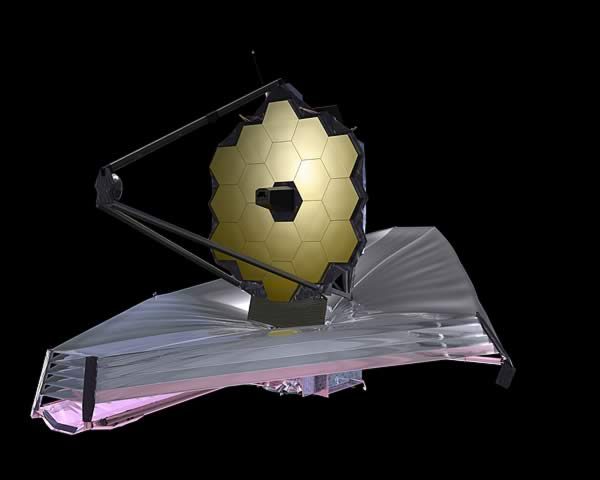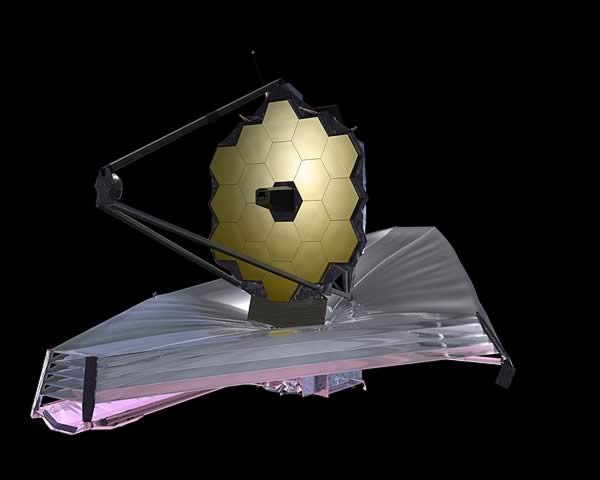
Greenbelt, MD-(ENEWSPF)- At long last, NASA is planning to launch the James Webb Space Telescope between March and June 2019 from the northeastern tip of South America, French Guiana. First, there will be an assessment of the remaining integration and test activities, according to NASA.
A launch window for the Webb (commonly JWST) in October 2018 was scrubbed.
“The change in launch timing is not indicative of hardware or technical performance concerns,” said Thomas Zurbuchen, associate administrator for NASA’s Science Mission Directorate at Headquarters in Washington. “Rather, the integration of the various spacecraft elements is taking longer than expected.”
The incredibly complex mechanisms aboard the JWST will permit astronomers to “see” into deep space much further than currently possible with the long-running Hubble Space Telescope (HST). Unlike the Hubble, the JWST will orbit the Sun at a distance of 1.5 kilometers (1 million miles) from Earth at what is called the second Lagrange point or L2. This orbit will permit the telescope to remain in line with the Earth as it moves around the Sun.
What is special about a Lagrange point? According to Space.com, “A Lagrange point is a location in space where the combined gravitational forces of two large bodies, such as Earth and the sun or Earth and the moon, equal the centrifugal force felt by a much smaller third body. The interaction of the forces creates a point of equilibrium where a spacecraft may be ‘parked’ to make observations.”
By “parking” in a spot where the Earth shields the satellite from the Sun, the JWST will be able to cool to as close as possible to absolute zero. Avoiding radiation from the Sun will allow the primarily infrared JWST to make observations with less distortion than was ever possible with the Hubble.

“As part of an international agreement with the ESA (European Space Agency) to provide a desired launch window one year prior to launch, NASA recently performed a routine schedule assessment to ensure launch preparedness and determined a launch schedule change was necessary,” NASA said in a release. “The careful analysis took into account the remaining tasks that needed to be completed, the lessons learned from unique environmental testing of the telescope and science instruments at NASA’s Goddard Space Flight Center in Greenbelt, Maryland, and the current performance rates of integrating the spacecraft element.”
NASA says testing of the telescope and science instruments continues to go well and on schedule at NASA’s Johnson Space Center in Houston, Texas. Testing has delayed the long-awaited project.
“The additional environmental testing time of the fully assembled observatory–the telescope and the spacecraft–will ensure that Webb will be fully tested before launching into space,” NASA said in a statement. “All the rigorous tests of the telescope and the spacecraft to date show the mission is meeting its required performance levels.”
“Webb’s spacecraft and sunshield are larger and more complex than most spacecraft. The combination of some integration activities taking longer than initially planned, such as the installation of more than 100 sunshield membrane release devices, factoring in lessons learned from earlier testing, like longer time spans for vibration testing, has meant the integration and testing process is just taking longer,” said Eric Smith, program director for the James Webb Space Telescope at NASA Headquarters in Washington. “Considering the investment NASA has made, and the good performance to date, we want to proceed very systemmatically through these tests to be ready for a Spring 2019 launch.”
“The James Webb Space Telescope is NASA’s next great multi-purpose observatory and will be the world’s most powerful space telescope ever built,” NASA said in a statement, “serving thousands of astronomers worldwide. The 21-foot (6.5-meter) diameter infrared-optimized telescope is designed to study an extremely wide range of astrophysical phenomena: the first stars and galaxies that formed; the atmospheres of nearby planets outside our solar system, known as exoplanets; and objects within our own solar system.”
Webb is an international project led by NASA with its partners ESA and the Canadian Space Agency.
Related: James Webb Space Telescope Arrives at NASA’s Johnson Space Center









